The Main and SFA Theaters, in Nacogdoches, on 8-30 and 8-22.
August 31, 2008
"Danke Schoen"
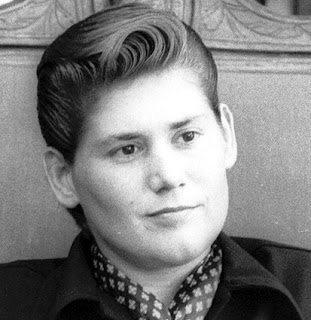 How do you explain Wayne Newton's POWER over millions? It's th' MOUSTACHE ... Have you ever noticed th' way it radiates SINCERITY, HONESTY & WARMTH? It's a MOUSTACHE you want to take HOME and introduce to NANCY SINATRA!
How do you explain Wayne Newton's POWER over millions? It's th' MOUSTACHE ... Have you ever noticed th' way it radiates SINCERITY, HONESTY & WARMTH? It's a MOUSTACHE you want to take HOME and introduce to NANCY SINATRA!- Zippy the Pinhead
From the Wikipedia entry:
"Danke Schoen" is a 1962 song first recorded by Bert Kaempfert, however it gained its fame in 1963 when American singer Wayne Newton recorded his version of it. The music was composed by Bert Kaempfert, with the lyrics written by Kurt Schwaback and Milt Gabler.
The song was released when Wayne Newton was 21 years old, and his youthful timbre at the time is sometimes mistaken for that of a female singer by those unfamiliar with the song.
And this next video is pretty frickin' sad. For one thing, it's too bad Newton stopped using the swingin' 1963 arrangement. Without the swing, "Danke Schoen" really comes off as being hokey. And I'd say the "youthful timbre" is a thing of the distant past! It's a shame. Newton has taken the whole bloated Elvis-cartoonish-self-parody thing and made it his own, at least here:
August 29, 2008
"Dream"
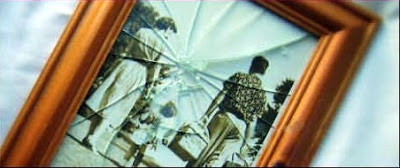 I'm just now rereading Philip Roth's Pulitzer Prize (two of 'em) winning novel, American Pastoral, for the second time. It's so, very good. The first third of the novel, entitled "Paradise Remembered," features Roth's alter ego, Nathan Zuckerman, attending his forty-fifth high school reunion. As the reunion party winds down, Zuckerman dances the final slow dance with an at first unrecognizable women, who "remembers" herself to Zuckerman by telling him: "I had a pink angora sweater...You took me on a class hayride."
I'm just now rereading Philip Roth's Pulitzer Prize (two of 'em) winning novel, American Pastoral, for the second time. It's so, very good. The first third of the novel, entitled "Paradise Remembered," features Roth's alter ego, Nathan Zuckerman, attending his forty-fifth high school reunion. As the reunion party winds down, Zuckerman dances the final slow dance with an at first unrecognizable women, who "remembers" herself to Zuckerman by telling him: "I had a pink angora sweater...You took me on a class hayride."From page 84:
"Well, all this," I told her, as we stood there just swaying together to the one-man band closing the day down singing, "Dream...when you're feelin' blue,...dream...that's the thing to do"--"all this I did not know," I told her, "on the harvest moon hayride in October 1948."
Further down on p. 84:
...and first we were laughing and then, unexpectedly, Joy began to cry and, perhaps because of that damn song, "Dream," which we used to dance to with the lights turned down in somebody or other's basement back when the Pied Pipers still had Jo Stafford and used to sing it the way it's supposed to be sung--in locked harmony, to that catatonic forties beat (I love that - both the writing and the catatonic beat), with the ethereal tinkle of the xylophone hollowly sounding behind them--
....and thus was this post born.
From the Wikipedia entry
"Dream" – sometimes referred to as "Dream (When You're Feeling Blue)" – is a jazz and pop standard with words and music by Johnny Mercer in 1944 and performed by many artists. The most popular versions of the songs include those by The Pied Pipers, Frank Sinatra, and Roy Orbison.
 For Capitol Records, The Pied Pipers, with lead singer June Hutton, made a version of "Dream" which became a major hit in 1945. The Pied Pipers would revive this ballad in the 1955 Fred Astaire-Leslie Caron musical film, Daddy Long Legs (the makers of the movie couldn't have possibly believed the "Slue-Foot" would become "nation's sensation"...).
For Capitol Records, The Pied Pipers, with lead singer June Hutton, made a version of "Dream" which became a major hit in 1945. The Pied Pipers would revive this ballad in the 1955 Fred Astaire-Leslie Caron musical film, Daddy Long Legs (the makers of the movie couldn't have possibly believed the "Slue-Foot" would become "nation's sensation"...).
August 27, 2008
"Don't Take Your Love From Me"
 The tune "Don't Take Your Love From Me" was written by Henry Nemo in 1944. Nemo was a musician, songwriter, and actor who was known as being a hipster and was sometimes credited as the creator of jive talk. Gotta love that. He had a very small part in Song of the Thin Man (1947) as "The Neem" in which he displayed his affinity for jive. As there is not a single picture to be found of Nemo on the vast Interwebs (I challenge you to find one), I am assuming in this clip from Song of the Thin Man he is one of the guys in the scene wherein they discuss classy, refined dames' "cultured tomatoes." Incidentally, this video features the lovely (even by today's standards) Gloria Grahame (she played the blonde "bad girl" in It's a Wonderful Life) singing "You're Not So Easy to Forget":
The tune "Don't Take Your Love From Me" was written by Henry Nemo in 1944. Nemo was a musician, songwriter, and actor who was known as being a hipster and was sometimes credited as the creator of jive talk. Gotta love that. He had a very small part in Song of the Thin Man (1947) as "The Neem" in which he displayed his affinity for jive. As there is not a single picture to be found of Nemo on the vast Interwebs (I challenge you to find one), I am assuming in this clip from Song of the Thin Man he is one of the guys in the scene wherein they discuss classy, refined dames' "cultured tomatoes." Incidentally, this video features the lovely (even by today's standards) Gloria Grahame (she played the blonde "bad girl" in It's a Wonderful Life) singing "You're Not So Easy to Forget":...What was this post about?....Oh yeah, "Don't Take Your Love From Me." Here is a slower, ballad version Sinatra recorded in 1961, which I've never heard. It's a bit too somnambulant for my liking, as I far prefer the recording of it he did (also in '61) for the great Come Swing with Me! album, but this at least gives you a sense of the fantastic melody:
 And this is the nine minute version John Coltrane recorded in 1958 for his The Stardust Sessions album, so be sure to watch every second:
And this is the nine minute version John Coltrane recorded in 1958 for his The Stardust Sessions album, so be sure to watch every second:August 25, 2008
"Popsicles and Icicles"
 In 1963, The Murmaids (an unfortunate typo!) scored a #3 hit with "Popsicles And Icicles." Group members, the Fisher sisters, were 15 and 17 at the time. The song was written by future Bread member, David Gates, and produced by the house producer at Chattahoochee Records, Kim Fowley. The girls were paid nothing for the record. Welcome to the music biz girls!
In 1963, The Murmaids (an unfortunate typo!) scored a #3 hit with "Popsicles And Icicles." Group members, the Fisher sisters, were 15 and 17 at the time. The song was written by future Bread member, David Gates, and produced by the house producer at Chattahoochee Records, Kim Fowley. The girls were paid nothing for the record. Welcome to the music biz girls!
August 22, 2008
"Who'd wanna wear bronze, anyway?"
 Harry Shearer and Martin Short, with the training of
Harry Shearer and Martin Short, with the training of "King for a Day"
 From the album (Oranges & Lemons, 1989) which would turn out to be one of XTC's last, great attempts at reaching an audience beyond its cult status, "King for a Day" is a Colin Moudling song.
From the album (Oranges & Lemons, 1989) which would turn out to be one of XTC's last, great attempts at reaching an audience beyond its cult status, "King for a Day" is a Colin Moudling song.This is what Andy Partridge said about it:
This is one of the three songs Colin wrote (for Oranges & Lemons). All of them are rather down and dark but put to jolly music, which makes them even more poignant. The song's about ass-licking and making a fool of yourself just to get fame and riches and success (sounds a lot like blogging). The song's a commando knife, dark and cutting. (source)
Here is XTC on David Letterman in 1989. As Letterman points out, this live performance marks the first one the group had done anywhere in seven years. Like Brian Wilson, Andy Partridge basically had somewhat of a complete breakdown due to the pressures of live performance. And much like with the Beach Boys, this caused XTC to funnel all their creative energies into studio experimentation:

August 20, 2008
Orion slave girls
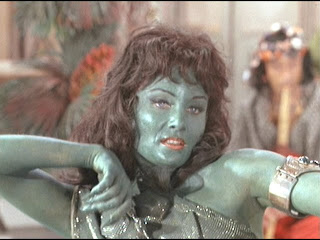 Not broadcast on television in its complete form until 1988, "The Cage" was the first pilot for the original Star Trek series. Susan Oliver starred as Vina, who through alien-induced illusions, appeared in different forms in an attempt to seduce the Enterprise's captain (Christopher Pike, portrayed by Jeffrey Hunter).
Not broadcast on television in its complete form until 1988, "The Cage" was the first pilot for the original Star Trek series. Susan Oliver starred as Vina, who through alien-induced illusions, appeared in different forms in an attempt to seduce the Enterprise's captain (Christopher Pike, portrayed by Jeffrey Hunter). 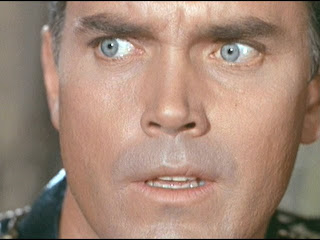
One of the more...alluring of the guises is that of an Orion slave girl, who are "like animals. Vicious, seductive. They say no Human male can resist them." This site has some interesting general information on the episode and the evolution of the Orion slave girl scene (including rare, on set pics), specifically.

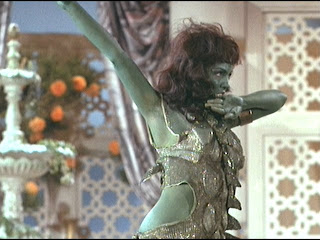 This scene, and one or two other scenes from Star Trek, awakened something in me when I was in the single-digit age category. Or was it during a Batman episode? Either way, here it is, featuring some of the most memorable Star Trek music, as well:
This scene, and one or two other scenes from Star Trek, awakened something in me when I was in the single-digit age category. Or was it during a Batman episode? Either way, here it is, featuring some of the most memorable Star Trek music, as well:The concept of a seductive, green, alien female must have stuck with Gene Roddenberry and the other Star Trek writers, because a somewhat similar character appeared in a later episode. The character, Marta, may or may not have been an Orion slave girl, but she was green:
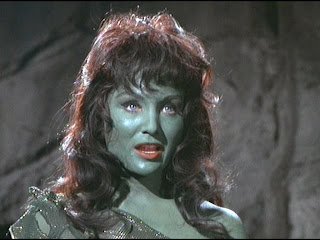 Years later, I would be unpleasantly reminded of Vina as Orion slave girl while watching Clash of the Titans.
Years later, I would be unpleasantly reminded of Vina as Orion slave girl while watching Clash of the Titans.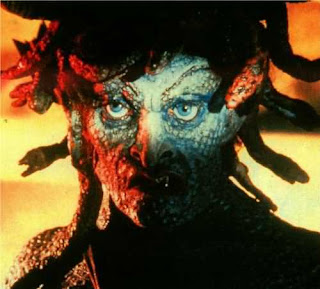
August 18, 2008
Nat King Cole's "Stardust"
 Nat King Cole recorded the Hoagy Carmichael tune "Stardust" for the Love Is the Thing (1957) album. Here is an excellent live performance on some TV program or another, I'd say in 1957 or '58 (possibly The Nat King Cole Show):
Nat King Cole recorded the Hoagy Carmichael tune "Stardust" for the Love Is the Thing (1957) album. Here is an excellent live performance on some TV program or another, I'd say in 1957 or '58 (possibly The Nat King Cole Show):
August 16, 2008
Echoes of the past on Galveston Island
The home in which I grew up, and lived in from 1972 to around 1987, is on the market, and in the process of being sold. Much of what I post about, here at this blog, was discovered during those days, in that house. I went down to spend a day or so, saying goodbye, and among other things, I drove around pretty much lost in memory. And I had my camera with me.
I've posted about Galveston before, but most of this I'd never photographed:




An old service station near Broadway.


El Patío Cafe

This and the next two photos are of Pennington Buick Co. - 1950, Art Deco



A derelict neon sign on a building near The Strand

Star Drug Store

I finally managed to get it when lit.



I've posted about Galveston before, but most of this I'd never photographed:
An old service station near Broadway.
El Patío Cafe
This and the next two photos are of Pennington Buick Co. - 1950, Art Deco
A derelict neon sign on a building near The Strand
Star Drug Store
I finally managed to get it when lit.
August 14, 2008
"April in Paris," one more time
 From the "April in Paris" Wikipedia entry:
From the "April in Paris" Wikipedia entry:"April in Paris" is a song composed by Vernon Duke with lyrics by E. Y. Harburg in 1932 for the Broadway musical, Walk a Little Faster. Count Basie's 1955 recording (recorded July 26, 1955 at Fine Sound, New York City) is the most famous, and that particular performance was inducted into the Grammy Hall of Fame. On this recording, trumpeter Thad Jones played his famous "Pop Goes the Weasel" solo, and Basie directs the band to play the end "one more time," then "one more once."
 Frank Sinatra was a big fan of Count Basie, and often referenced him in song ("Hey there cutes, put on your Basie boots" from "Come Dance with Me") and otherwise. The ending of the title track to Nice 'n' Easy (1960) references the "April in Paris" recording with the singer's seemingly off the cuff "Like the Man says, 'One more time.'"
Frank Sinatra was a big fan of Count Basie, and often referenced him in song ("Hey there cutes, put on your Basie boots" from "Come Dance with Me") and otherwise. The ending of the title track to Nice 'n' Easy (1960) references the "April in Paris" recording with the singer's seemingly off the cuff "Like the Man says, 'One more time.'"This site provides some additional details about the '55 Basie recording:
 The opening classic title track (to April in Paris) was arranged by organist Wild Bill Davis, a forgotten master of the instrument who certainly belongs up there with Jimmy Smith and Jack McDuff. It became Basie's biggest hit, charging up to number 28 on the pop charts. The arrangement is expansive and features the classic Basie reed section that is smooth as can be without becoming syrupy. Thad Jones lays in with a nice trumpet solo and we also get a solo from Benny Powell, who obtains the sweetest sound I've ever heard from a trombone. Then there's the matter of Basie's repeated "one more time" false endings, which certainly must have added to the record's popularity with the general public. In any case, when it is over, it's pretty hard not to just start the song up all over again.
The opening classic title track (to April in Paris) was arranged by organist Wild Bill Davis, a forgotten master of the instrument who certainly belongs up there with Jimmy Smith and Jack McDuff. It became Basie's biggest hit, charging up to number 28 on the pop charts. The arrangement is expansive and features the classic Basie reed section that is smooth as can be without becoming syrupy. Thad Jones lays in with a nice trumpet solo and we also get a solo from Benny Powell, who obtains the sweetest sound I've ever heard from a trombone. Then there's the matter of Basie's repeated "one more time" false endings, which certainly must have added to the record's popularity with the general public. In any case, when it is over, it's pretty hard not to just start the song up all over again. Sounding a little bit like the classic "Miller sound" of Glenn Miller and Orchestra, when that "classic Basie reed section that is smooth as can be without becoming syrupy" kicks in after the trumpet solo (the "Pop goes the weasel" solo on the 1955 recording, located at 1:45 in the following video of a live performance), I think it has to be considered one of the most gloriously beautiful moments ever captured in the history of recorded music. Here Basie and band performs "April In Paris," "Big Brother," and "Jumpin' At The Woodside" for a surprisingly mixed race crowd in what appears to be the late fifties, so you want to watch at least the first song:
August 13, 2008
Vive Le E!
Elvis with co-star Ann-Margret
Viva Las Vegas (1964) is generally considered to be one of Elvis' "good movies," as opposed to Blue Hawaii (1961) or Clambake (1967), two of his "bad movies." But calling it a good Elvis movie is a little bit like calling skin cancer a good cancer. There really is no such thing as a good Elvis movie. He just didn't make quality films, and pretty clearly he (and/or Colonel Tom Parker) really didn't care too much. Unlike Sinatra, Elvis doesn't have a From Here to Eternity or The Man with the Golden Arm or The Manchurian Candidate or even Suddenly to point to as being significant and serious film work. Viva Las Vegas does nothing to really change that.
Elvis with co-star Ann-Margret's lower half
But it does have Elvis, and it has Vegas as it was in 1964. So, despite being just another Elvis movie (really), Viva Las Vegas is a priceless historical document - preserving both Big E and Vegas in their prime. Regular visitors to this blog might have noticed I have an interest in "old Vegas," and the film provides several, quick glimpses of what it used to be like. Here is the title sequence, quite possibly the best part of the film:
No movie could successfully follow that!
Let's have a longer look at some of that in screencap form. Witness the beautiful neon display that was Fremont Street:
By day, at the finish line of the Grand Prix
Glitzy hotels along Las Vegas Blvd., of which only The Flamingo survives. Today, it looks nothing like it did here, so this Flamingo is all but gone:
the eighty-foot neon "Champagne Tower"
Love is now the stardust of yesterday...
The music of the years gone by.
The Sands
Ann-Margret reacts to the horrors of Grand Prix racing
Now, I understand that during the auto race, the cars are supposed to be driving across the Hoover Dam from Nevada into Arizona. And maybe it's just me, but it seems slightly implausible that one moment the racers can be here:
And here
To fairly suddenly being here:
Here
Here
And here
Finally returning back to here:
Elvis in a helmet just doesn't work. Bad idea.
"Luke! Use the Force."
Wisely, the makers of the Viva Las Vegas decided it would be a good idea to have Elvis remove the helmet during filming of the performance scene featuring the title track. Supposedly this scene is the only one in Elvis' career to depict him performing an entire song, in one uncut take, and as shot by the lens of a single. And he's really good in it:
Subscribe to:
Comments (Atom)